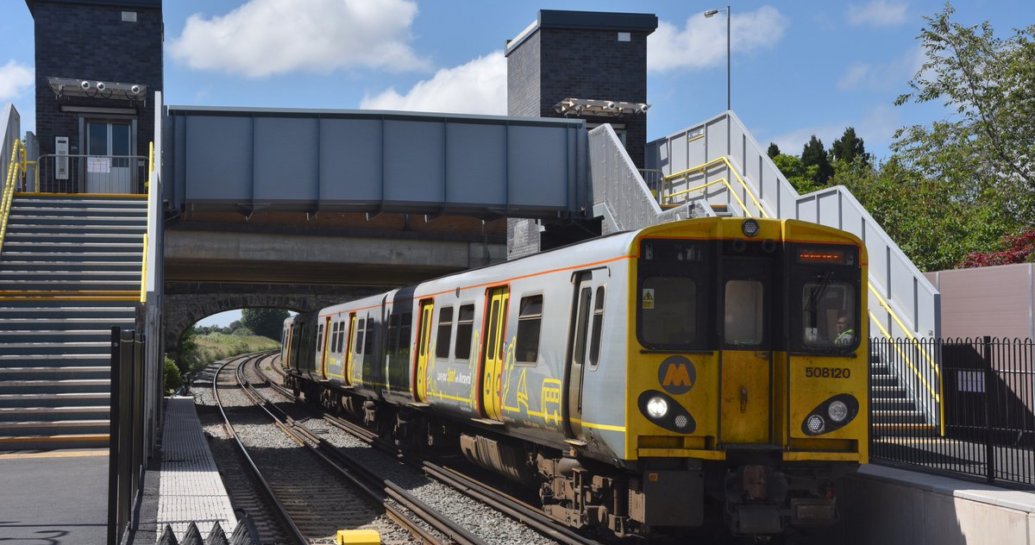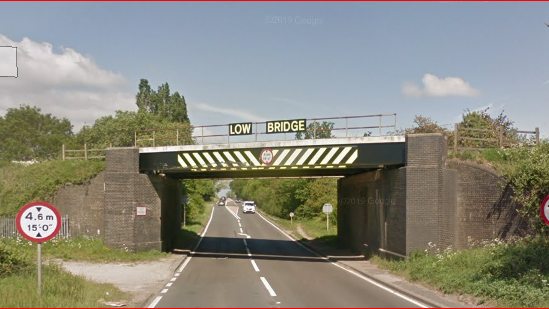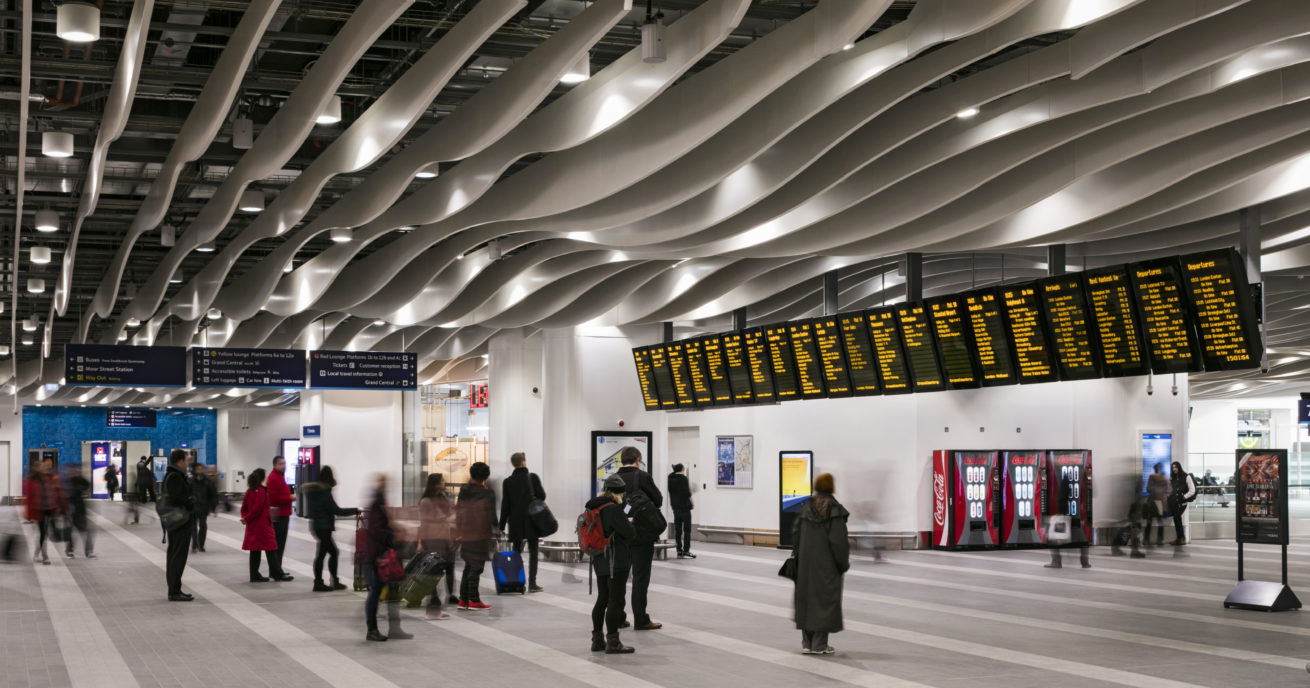Network Rail is making it easier for third parties to invest in Britain’s railway.
On 30 January, Harriet Hepburn, corporate finance and business development director at Network Rail, spoke to delegates including representatives from investors, the government and the broader rail sector to explain how we’re improving the investment process.
More funding from third parties will enable additional improvements to the network, which will benefit passengers and the economy.
Maghull North railway station – funded by the government’s Local Growth Fund (LGF), transport executive Merseytravel and the Homes and Communities Association – is an example of the initiative. It opened in June 2018 after just nine months of construction and was the first additional station on the Merseyrail network in 20 years.
The £13m scheme, part of a broader £340m railway investment in the Liverpool City Region, forms part of the Great North Rail Project to transform travel in the region.
Network Rail undertook the scheme on behalf of Merseytravel, appointing contractor Buckingham Group.
How to build a railway station in nine months
How did we deliver the station so quickly and carry out most of the works while keeping the railway line open? A head start, line access and a tight summer deadline.
Robert Grey, a project manager of infrastructure projects at Network Rail, said: “Nine months is quite short for a station… The restricting factor is the access. We had quite a bit of flexibility there. We had access for long weekends and a 12-day possession of the line after Christmas… Without those we’d still be there now.”
Concept to consent
The concept of a new station for the town of Maghull was well established when detailed planning work began in 2015 – initial plans dated back to 2010 before new funding had to be found five years later. By the project’s resurrection, Maghull North’s site had been identified and high-level plans drawn up.
Robert said: “It was a case of reworking the old plans to get a station that was compliant to modern standards, developing the scheme and re-estimating it.”
The concept phases of governance for railway investment projects (GRIP) stages one to three are when the biggest decisions regarding a build are made. For instance, is it possible to build a railway station on the proposed site? Can the infrastructure take a new railway station? Does the funding exist? Is a new station the best option or is it possible to expand an existing station further down the line to increase capacity?
In this case, Maghull North, located between the existing Maghull and Town Green stations on the Merseyrail Northern line, near Liverpool, was needed to meet new and future demand from residents of more than 2,000 new homes.
There’s still lots of work before detailed designs are finalised. Among other things, the project must get the green light from the local council, produce cost estimates and get the approval of the train operating companies that will use the station.
Necessary signals alterations for the project were expected to slow things down so Maghull North’s paper work – GRIP stage four – was completed in parallel with GRIP stage three to keep on schedule.
Maghull North is part of a bigger investment in the Liverpool City Region, which includes the redevelopment of Liverpool Lime Street station
Breaking ground
In a bid to save time on site, the construction crew arrived for work in September 2017, starting work in parallel with the production of detailed designs. The crew broke ground with enough approved detailed designs to allow work on the foundations and platforms to commence – a tactic known as progressive assurance.
Robert said: “Instead of spending four or five months doing detailed design and going out on site, it allows you to start doing the works almost within a couple of months. It’s a risk-based approach. You decide what you can do and if there is virtually no risk… you start building fairly rapidly.”
The first job was to clear the ground. This involved diverting an 11-kilovolt cable buried in the embankment near the location of a new platform to a safe position. It also meant protecting a nearby gas and water main that ran through the construction site.
With platforms set to be 180m long, this excavation of the embankment and the building of the foundations took two long weekends of disruptive access in November.
Taking shape
Between January and February, Maghull North began to resemble a railway station. During two more long weekends of disruptive access, the team installed stairs, a bridge and two lift shafts.
Much of what you see at a station is built off-site by the manufacturers. Once on site, the whole structure could be installed in about six hours, depending on weather.
The track already existed but with a new station built around it, the railway needed to be straight. An unlevel railway would mean excessive gaps between the platform and the track.
Robert said: “When you go around a corner and the road slopes, we call that cant. You want as little cant as possible through a platform because it tilts the train and makes the step off the train larger for passengers.”
The track was moved into a new straight and flat position with the use of a piece of equipment called a tamper over two weekends. A tamper lifts the track, shakes up and packs the ballast – the stones that cushion the railway – and puts it back into its new position. The machinery can move about 200m of track a night.
Meanwhile, the crew built the station’s car park and started work on signage and fencing.
First fix
In May and June, with the end of the project in sight, it could run without disruption throughout the day. This also enabled train services to operate normally.

The team installed cabling and surfaced the platforms. It also fitted equipment including information screens and CCTV cameras, and installed further signage, shelters and seating.
The steel frame station house went up fast, with brickwork and glazing completing the structure. Electrics, water and the ticket office quickly followed.
One final line possession was essential before doors opened to passengers, however. A 29-hour closure of the line enabled the team to complete work on the signals – essentially the railway’s traffic lights. This work allowed trains to stop safely at the new station. The system had to be tested with technology simulating the presence of trains on the tracks – something that became a reality on June 18 with the 05:58 to Liverpool Central.
The first train services arrive at Maghull North
Alight here
For the first time in 20 years, the Merseyrail network had an additional station. But the team wasn’t done yet.
Network Rail had aimed to complete by the end of May, in time for the new timetable. However, the project faced almost two months of delays last year before the team could start on site that September. This was caused by last-minute legal difficulties with purchasing the station’s land.
Robert’s crew managed to reclaim four weeks but the slightly later date meant the snagging work typically carried out before opening would be completed by the autumn.
Robert said: “We had a station that was fully compliant and signed off, but there were still some outstanding bits of work… things like pointing on brickwork or a bit of tidying up and bits of fencing.”
Soon, Network Rail would fully hand Maghull North over to Merseyrail, an important piece of infrastructure in the 30-year plan to improve connections within the Liverpool City Region and beyond.




